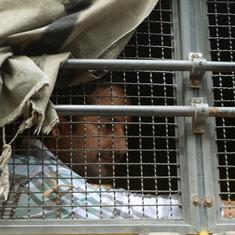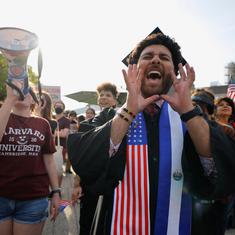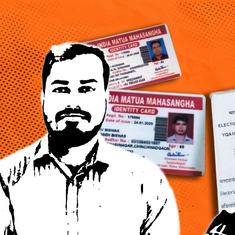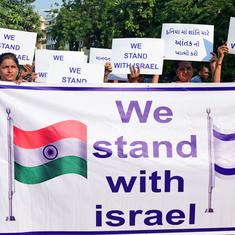1. How did you follow the drama as it developed?
As the situation evolved, I engaged in discussion on Twitter with journalists reporting the hostage crisis. I also discussed events with other observers. Of course, these events no longer unfold in a local silo and neither does communication of those events rely exclusively on mainstream media reporters bound by traditional publication deadlines.
This means that it’s possible to remotely observe local coverage in real-time. And it’s also possible to curate a rich news feed in the context of a developing crisis – one where media reports from individual journalists and their news brands intermingle with the observations of witnesses and official sources, such as police and emergency services.
This shift also means that local coverage now unfolds instantly in an international context.
This is a complex story – and one full of ethical risks and verification pitfalls. It also has the potential to do significant harm to Muslim Australians if it is mishandled, through the magnification of inaccurate information, prejudicial tropes and myths.
While some journalists wrongly declared on Twitter – and later in print – that the flag being held up to the cafe window by a hostage was an Islamic State flag, others stated that they were holding back from revealing any details about the police operation and the hostage-taker’s demands, to avoid interfering with the police efforts.
Sydney TV station Channel 7 was – with its offices situated opposite the scene and its cameras trained on the drama almost instantly it erupted – in a prime position to report on the siege before staff members were evacuated. And, despite elements of sensationalism and risky initial reportage of police manoeuvres, the comments I heard on an ABC radio stream from one of their reporters demonstrated proper professional caution.
I was broadly impressed by the tone and content of Guardian Australia’s live blog and their fact-checking stories, along with those published by the Sydney Morning Herald and the ABC. Significantly, while other Australian newspaper websites appeared to be dormant as police stormed the scene of the siege overnight, the Guardian’s liveblog continued.
But, Murdoch’s Daily Telegraph, which ran a wraparound prematurely identifying the hostage-taker as “IS” and containing other false information, represented a low point.
The Daily Telegraph's ignorant, fear-mothering headlines. "Death Cult CBD Attack" #sydneysiege #martinplace #Sydney pic.twitter.com/iimKCIudEB
— Jack Monaghan (@jackpmg) December 15, 2014International news organisations reported that the hostage-taker was a known to police as a man who claims to be an Iranian cleric, reportedly currently on bail for being an accessory to the murder of his former wife and facing sexual assault charges. There is still no evidence he is a member of IS, nor that he is part of an organised plot. The fact that he is displaying an Islamic flag is certainly relevant, but it does not justify the Telegraph’s unverified and highly inflammatory headlines: “IS takes 13 hostages in city cafe siege: DEATH CULT CBD ATTACK”.
2. How important is it to avoid stereotypes in a story like this?
It is vitally important to avoid stereotyping Muslims and focusing blame on diverse Muslim communities. Previous research I have undertaken on the impacts of media stereotyping of Muslim women in post-September 11 Australia, for example, revealed that such coverage increases the fear experienced by Muslim women, especially those who are identifiably Muslim because of their religious dress. This can cause them to withdraw – both physically and as participants in public debate.
There is also evidence that inflammatory media coverage of Muslims gives “licence” to acts of violence and abuse directed at innocent members of the Muslim community, such as the message that circulated on social media from Take Back Australia urging people to head en masse to Lakemba (in Sydney’s south) which has one of Australia’s biggest mosques.
3. How has social media affected coverage of this story?
One positive to emerge from this hostage crisis, and the problematic reporting of it, is the #illridewithyou hashtag. It’s currently the number one global trending topic on Twitter and it began with a user called @sirtessa offering to travel on public transport with identifiable Muslims who were too afraid to head home alone in the context of the siege.
If you reg take the #373 bus b/w Coogee/MartinPl, wear religious attire, & don’t feel safe alone: I’ll ride with you. @ me for schedule. — Sir Tessa (@sirtessa) December 15, 2014The initial offer of help was retweeted several hundred times and the hashtag became a forum for those expressing support and empathy for Muslims who were feeling targeted. According to Twitter Australia, 12 hours after the siege began, there were 90,000 tweets (or 260 per minute) referencing #illridewithyou.
UPDATE: There has now been more than 90,000 mentions of #illridewithyou tonight http://t.co/Yg80kag6qz #amazing pic.twitter.com/SEliFNmOfF — Twitter Australia (@TwitterAU) December 15, 2014And the media is now reporting on this development in online solidarity as demonstrated during the 2011 London riots, social media platforms can be conduits for organising positive community responses – as well as having the potential to rapidly spread information and misinformation, and disrupt police actions.
Social media both speeds up the coverage of a story such as this and risks magnifying inaccuracies. It allows journalists to interact directly with witnesses and official sources in real time, but it poses a significant problem for law enforcement as citizen reporters and witnesses gathering near the scene join mainstream media in sharing pictures, video and details of police manoeuvres in the midst of a delicate hostage crisis.

4. What have been the pitfalls as you have seen them?
Professional journalists and news crews may comply with police requests to avoid sharing such images and details, but it’s impossible to harness the crowd. The disruptive effect of social media has an impact on law enforcement – as well as media coverage of crisis situations. This story highlights the critical importance of verification and should also serve as a reminder of the need to pause to carefully consider ethics and social responsibilities even in the midst of a potent breaking story.
Similarly, I would withhold the identities of hostages until police formally release the names. This is a breaking story, but a journalist’s right – and duty – to report it should be a matter of carefully weighed public interest, in which the right to know should be balanced by the need to avoid placing the hostages at increased risk, and causing unnecessary pain and suffering to their families.
But, as I tweeted when the story broke and police began attempting to curtail media coverage, balancing the right to report in a democracy against state requests for co-operation in investigations and hostage rescue efforts is a conundrum for journalists and media organisations. The threat of censorship is real – and so is the need to avoid being a vessel for dangerous propaganda. But the ability to weigh ethical issues is a fundamental requirement for the practice of professional journalism.
This article was originally published on The Conversation.










